
formation of the great lakes

 The largest postglacial lake, Nipissing, occupied the basins of Huron, Michigan, and Superior. Just about every type of boat or ship you can imagine from wooden canoes to mine-laying submarines has deployed on the Great Lakes at some point in time. Some of the largest lakes in the US are created using this method, including Lake Mead, Lake Powell, and Lake Oahe. These lakes (often called reservoirs) are formed when humans dam up certain aspects of a river, backing the river up into a large pool behind it. Simply put, the Great Lakes were created by glaciers. As the climate across the earth warms (whether from human-caused climate change or natural swings in temperature), glaciers continue to melt and fill the scarred terrain they leave behind even more. If you don't get the reference, that's the acronym some people use to help them remember the names of North America's Great Lakes: Huron, Ontario, Michigan, Erie and Superior. If you need help with the Public File, call (313) 222-0566. Adult sturgeon can be more than 7 feet (2.13 meters) long and weigh 240 pounds (108 kilograms). While we take the fresh water part of the lakes for granted, we also take their origins for granted. Crater Lake in Oregon is an example of this formation and is currently one of the deepest (and prettiest) lakes in the world. At one high-water stage, the waters of the Huron and Michigan basin formed one large lakeLake Algonquin. Some 97 percent of all the water on our planet is saltwater. As an Amazon Associate I earn from qualifying purchases. It's estimated that the glacier was nearly 2.5 miles thick. On Lake Huron, there's a Canadian landmass called Manitoulin Island. The last glaciation in North America is called the Wisconsin Glacial Stage because it left many fresh landforms and sediments in that state. The fingerprints of koalas are almost indistinguishable from human fingerprints. Either way, some of these newcomers are killing or out-competing the native species which is a huge problem. When springtime comes, the lake's temperature will rise more slowly than the land that surrounds it. Quantity is nice, but so is quality. When a particularly wet season floods the river, it can burst through its banks, causing the loops of the meander can connect. Fish that walk! Lets get started! The most common times for this to happen are during the ice ages. Discover them all for FREE, Discover the Most Alligator Infested Lakes in, Alligator Infested Lakes: Why Lake Okeechobee is, deepest (and prettiest) lakes in the world, The 10 Most Alligator Infested Lakes in the United States, The Top 4 Most Alligator Infested Lakes In Texas, The 10 Largest Man-Made Lakes in the United States, The 10 Most Snake Infested Lakes in the United States, The 15 Deepest Lakes in the United States. Uplift has continued at a rate of about 1 foot (30 centimetres) every 100 years; this is evidenced by the drowned river mouths of western Lakes Erie and Superior. Many of these vessels are almost perfectly preserved. Please copy/paste the following text to properly cite this HowStuffWorks.com article: The North American Great Lakes: Lake Superior, Michigan, Huron, Erie and Ontario as seen from satellite. It is generally accepted that Lake Erie reached its present level about 10,000 years ago, Lake Ontario about 7,000 years ago, and Lakes Huron, Michigan, and Superior some 3,000 years ago. The chillier temperatures cause fruit trees to blossom later in the season. In saltwater, iron-based metal corrodes more rapidly. The Great Lakes were formed when massive sheets of ice (glaciers) began receding. As the icy bulldozers went northward, they carved out deep troughs in the earth that later filled with water. 1 March 2018. A comprehensive look at local, statewide and national news events is provided by the Local 4 News Team along with updates on sports, weather and traffic. The resulting depression can be filled with rain or snow, creating large, isolated lakes at high elevations. What's the deal with those giant puddles that surround the Mitten?
The largest postglacial lake, Nipissing, occupied the basins of Huron, Michigan, and Superior. Just about every type of boat or ship you can imagine from wooden canoes to mine-laying submarines has deployed on the Great Lakes at some point in time. Some of the largest lakes in the US are created using this method, including Lake Mead, Lake Powell, and Lake Oahe. These lakes (often called reservoirs) are formed when humans dam up certain aspects of a river, backing the river up into a large pool behind it. Simply put, the Great Lakes were created by glaciers. As the climate across the earth warms (whether from human-caused climate change or natural swings in temperature), glaciers continue to melt and fill the scarred terrain they leave behind even more. If you don't get the reference, that's the acronym some people use to help them remember the names of North America's Great Lakes: Huron, Ontario, Michigan, Erie and Superior. If you need help with the Public File, call (313) 222-0566. Adult sturgeon can be more than 7 feet (2.13 meters) long and weigh 240 pounds (108 kilograms). While we take the fresh water part of the lakes for granted, we also take their origins for granted. Crater Lake in Oregon is an example of this formation and is currently one of the deepest (and prettiest) lakes in the world. At one high-water stage, the waters of the Huron and Michigan basin formed one large lakeLake Algonquin. Some 97 percent of all the water on our planet is saltwater. As an Amazon Associate I earn from qualifying purchases. It's estimated that the glacier was nearly 2.5 miles thick. On Lake Huron, there's a Canadian landmass called Manitoulin Island. The last glaciation in North America is called the Wisconsin Glacial Stage because it left many fresh landforms and sediments in that state. The fingerprints of koalas are almost indistinguishable from human fingerprints. Either way, some of these newcomers are killing or out-competing the native species which is a huge problem. When springtime comes, the lake's temperature will rise more slowly than the land that surrounds it. Quantity is nice, but so is quality. When a particularly wet season floods the river, it can burst through its banks, causing the loops of the meander can connect. Fish that walk! Lets get started! The most common times for this to happen are during the ice ages. Discover them all for FREE, Discover the Most Alligator Infested Lakes in, Alligator Infested Lakes: Why Lake Okeechobee is, deepest (and prettiest) lakes in the world, The 10 Most Alligator Infested Lakes in the United States, The Top 4 Most Alligator Infested Lakes In Texas, The 10 Largest Man-Made Lakes in the United States, The 10 Most Snake Infested Lakes in the United States, The 15 Deepest Lakes in the United States. Uplift has continued at a rate of about 1 foot (30 centimetres) every 100 years; this is evidenced by the drowned river mouths of western Lakes Erie and Superior. Many of these vessels are almost perfectly preserved. Please copy/paste the following text to properly cite this HowStuffWorks.com article: The North American Great Lakes: Lake Superior, Michigan, Huron, Erie and Ontario as seen from satellite. It is generally accepted that Lake Erie reached its present level about 10,000 years ago, Lake Ontario about 7,000 years ago, and Lakes Huron, Michigan, and Superior some 3,000 years ago. The chillier temperatures cause fruit trees to blossom later in the season. In saltwater, iron-based metal corrodes more rapidly. The Great Lakes were formed when massive sheets of ice (glaciers) began receding. As the icy bulldozers went northward, they carved out deep troughs in the earth that later filled with water. 1 March 2018. A comprehensive look at local, statewide and national news events is provided by the Local 4 News Team along with updates on sports, weather and traffic. The resulting depression can be filled with rain or snow, creating large, isolated lakes at high elevations. What's the deal with those giant puddles that surround the Mitten? These faults are then filled by rivers, oceans, or even rain.

 They played a central role in the European colonization and development of North America and for decades have attracted people and industry; Lakes Erie and Ontario and the southern portion of Lake Michigan are now ringed with large population concentrations. Try birdwatching. The Great Lakes are among the most dominant features of the northern United States. Please select which sections you would like to print: What lakes comprise the Great Lakes of North America? Where does water in the Great Lakes originate? And this is to say nothing of the naval battles that broke out here during the War of 1812. The age of the Great Lakes is still not definitely determined. Accordingly, the region has a huge fruit-growing industry. As the period ended, however, we had extended into Eurasia and Australia. When the plates of the earth move, they can cause cracks or faults in the crust. Thinking about the creation of these giants is mind-boggling, but it had to happen at some point! Ken Haddad is the digital content and audience manager for WDIV / ClickOnDetroit.com. On the shores of a large lake, this fact is readily apparent.
They played a central role in the European colonization and development of North America and for decades have attracted people and industry; Lakes Erie and Ontario and the southern portion of Lake Michigan are now ringed with large population concentrations. Try birdwatching. The Great Lakes are among the most dominant features of the northern United States. Please select which sections you would like to print: What lakes comprise the Great Lakes of North America? Where does water in the Great Lakes originate? And this is to say nothing of the naval battles that broke out here during the War of 1812. The age of the Great Lakes is still not definitely determined. Accordingly, the region has a huge fruit-growing industry. As the period ended, however, we had extended into Eurasia and Australia. When the plates of the earth move, they can cause cracks or faults in the crust. Thinking about the creation of these giants is mind-boggling, but it had to happen at some point! Ken Haddad is the digital content and audience manager for WDIV / ClickOnDetroit.com. On the shores of a large lake, this fact is readily apparent. 
 Water and land have different relationships with heat. How were the Great Lakes of North America formed? There are limestone outcrops and large deposits of sand and gravel, usually near shore. As the ice retreat continued, Lake Maumee was drained into Lake Chicago through a valley that now contains the Grand River in Michigan. During the early stages of the ice age, homo sapiens were primarily relegated to the warm regions of the earth. Other exotic fish, such as the sea lampreys, just snuck in.
Water and land have different relationships with heat. How were the Great Lakes of North America formed? There are limestone outcrops and large deposits of sand and gravel, usually near shore. As the ice retreat continued, Lake Maumee was drained into Lake Chicago through a valley that now contains the Grand River in Michigan. During the early stages of the ice age, homo sapiens were primarily relegated to the warm regions of the earth. Other exotic fish, such as the sea lampreys, just snuck in.  The weight of the ice sheet exerted enormous pressures on the Earths crust. The glaciers undoubtedly scoured existing valleys, widening and deepening them and radically changing the drainage of the area. Within moments a body of water is formed, creating a U-shaped lake known as an oxbow lake. He enjoys suffering through Lions games on Sundays in the fall. Finally, there's coral, which thrives in warm waters and can encrust itself all over submerged vessels. Often, these lakes are quite large since glaciers themselves are large themselves. So it's not surprising that the lakes contain an estimated 8,000 shipwrecks, with new ones being discovered on a regular basis. Even though water exists in three states, there is only one correct answer to the questions in this quiz. Five lakes make up the Great Lakes, including Lakes Superior, Michigan, Huron, Erie, and Ontario. Dive in and test your knowledge of waterand see whether you sink or swim. From 1990 to 2018, satellite images reveal a rise of the number of glacial lakes by 53 percent. Take a look at this map breakdown showing the ice retreat and formation of the Great Lakes over thousands of years. Eventually, drainage to the east and into the Atlantic Ocean was established, at one time down the valleys of the Mohawk and Hudson rivers and then along the course of the upper St. Lawrence River. Taken by the Sea: 11 Real-life Shipwrecks, Why North America's Lakes Are Getting Distressingly More Salty, Planet Observer/Universal Images Group/Getty Images, Special Offer on Antivirus Software From HowStuffWorks and TotalAV Security. When a beaver creates a dam in a small river system, it can create large areas of stagnant water. The lakes have not benefited from this development, however, and have been seriously affected by pollution. Other well-known species include the muskellunge, rock bass and northern pike. Together, the Great Lakes form the largest group of freshwater lakes by surface area and are the second largest by volume. So in summary, a visitor could theoretically stand on a little island in a little lake that's on a big island in a big lake. Concern over the fate of the lakes reached a high pitch in the late 20th century, with both the U.S. and the Canadian governments and individuals investigating methods for reversing the consequences of years of misuse of the lakes waters. In a period of warmth, they will then recede, allowing the troughs to be filled with meltwater. Several game species like Atlantic salmon and rainbow trout were deliberately introduced. All the more reason to keep them pollution-free.
The weight of the ice sheet exerted enormous pressures on the Earths crust. The glaciers undoubtedly scoured existing valleys, widening and deepening them and radically changing the drainage of the area. Within moments a body of water is formed, creating a U-shaped lake known as an oxbow lake. He enjoys suffering through Lions games on Sundays in the fall. Finally, there's coral, which thrives in warm waters and can encrust itself all over submerged vessels. Often, these lakes are quite large since glaciers themselves are large themselves. So it's not surprising that the lakes contain an estimated 8,000 shipwrecks, with new ones being discovered on a regular basis. Even though water exists in three states, there is only one correct answer to the questions in this quiz. Five lakes make up the Great Lakes, including Lakes Superior, Michigan, Huron, Erie, and Ontario. Dive in and test your knowledge of waterand see whether you sink or swim. From 1990 to 2018, satellite images reveal a rise of the number of glacial lakes by 53 percent. Take a look at this map breakdown showing the ice retreat and formation of the Great Lakes over thousands of years. Eventually, drainage to the east and into the Atlantic Ocean was established, at one time down the valleys of the Mohawk and Hudson rivers and then along the course of the upper St. Lawrence River. Taken by the Sea: 11 Real-life Shipwrecks, Why North America's Lakes Are Getting Distressingly More Salty, Planet Observer/Universal Images Group/Getty Images, Special Offer on Antivirus Software From HowStuffWorks and TotalAV Security. When a beaver creates a dam in a small river system, it can create large areas of stagnant water. The lakes have not benefited from this development, however, and have been seriously affected by pollution. Other well-known species include the muskellunge, rock bass and northern pike. Together, the Great Lakes form the largest group of freshwater lakes by surface area and are the second largest by volume. So in summary, a visitor could theoretically stand on a little island in a little lake that's on a big island in a big lake. Concern over the fate of the lakes reached a high pitch in the late 20th century, with both the U.S. and the Canadian governments and individuals investigating methods for reversing the consequences of years of misuse of the lakes waters. In a period of warmth, they will then recede, allowing the troughs to be filled with meltwater. Several game species like Atlantic salmon and rainbow trout were deliberately introduced. All the more reason to keep them pollution-free.  Adding them up, the Great Lakes contain about 21% of the entire earths surface freshwater. Knowing how big they are, the next step for many is to wonder how they were made! Some of the most famous lakes that have been formed through tectonic activity are the Caspian Sea and Lake Baikal. Thankfully, science has some answers for us.
Adding them up, the Great Lakes contain about 21% of the entire earths surface freshwater. Knowing how big they are, the next step for many is to wonder how they were made! Some of the most famous lakes that have been formed through tectonic activity are the Caspian Sea and Lake Baikal. Thankfully, science has some answers for us.  After the weight of the ice was removed, the land (i.e., the outlet to the lakes) began to rise, closing off some outlets and allowing the water levels of the lakes to slowly rise. About 10,000 years ago, the upper lakes evidently discharged through this area via the Ottawa River valley, and their levels were substantially reduced. Omissions? By comparison, water takes longer to warm up and cool down.
After the weight of the ice was removed, the land (i.e., the outlet to the lakes) began to rise, closing off some outlets and allowing the water levels of the lakes to slowly rise. About 10,000 years ago, the upper lakes evidently discharged through this area via the Ottawa River valley, and their levels were substantially reduced. Omissions? By comparison, water takes longer to warm up and cool down. 
 Great Lakes, chain of deep freshwater lakes in east-central North America comprising Lakes Superior, Michigan, Huron, Erie, and Ontario.
Great Lakes, chain of deep freshwater lakes in east-central North America comprising Lakes Superior, Michigan, Huron, Erie, and Ontario.  That's part of the reason why Ontario produces more wine than any other Canadian province. They are one of the great natural features of the continent and of the Earth.
That's part of the reason why Ontario produces more wine than any other Canadian province. They are one of the great natural features of the continent and of the Earth.  Studies in the Lake Superior region indicate that a river system and valleys formed by water erosion existed before the Ice Age. That's a lot of water, especially when, one in five people around the world don't have reliable access to safe drinking water. Lake Superior is the largest of the five Great Lakes of North America. Glacial lakes exist all over the world and are continually growing or forming, even today. Lake Chicago, in what is now the southern Lake Michigan basin, and Lake Maumee, in present-day western Lake Erie and its adjacent lowlands, originally drained southward into the Mississippi River through the Illinois and Wabash drainages, respectively. As a result, glaciers are able to slide forward, grinding and eroding land as they go. Spiders that fly! The Great Lakes were born when glaciers receded from this part of the world at the end of the last ice age. While every effort has been made to follow citation style rules, there may be some discrepancies. Copyright 2022 ClickOnDetroit.com is managed by Graham Digital and published by Graham Media Group, a division of Graham Holdings. https://www.britannica.com/place/Great-Lakes, U.S. Environmental Protection Agency - Great Lakes, National Wildlife Federation - Great Lakes, North America, LiveScience - Great Facts About the Five Great Lakes, Great Lakes - Children's Encyclopedia (Ages 8-11), Great Lakes - Student Encyclopedia (Ages 11 and up). The fastest growing lakes are in Scandinavia, Iceland, and Russia, but their volume is relatively small compared to other regions. The Great Lakes are a chain of deep freshwater lakes in east-central North America comprising the lakes Superior, Michigan, Huron, Erie, and Ontario.
Studies in the Lake Superior region indicate that a river system and valleys formed by water erosion existed before the Ice Age. That's a lot of water, especially when, one in five people around the world don't have reliable access to safe drinking water. Lake Superior is the largest of the five Great Lakes of North America. Glacial lakes exist all over the world and are continually growing or forming, even today. Lake Chicago, in what is now the southern Lake Michigan basin, and Lake Maumee, in present-day western Lake Erie and its adjacent lowlands, originally drained southward into the Mississippi River through the Illinois and Wabash drainages, respectively. As a result, glaciers are able to slide forward, grinding and eroding land as they go. Spiders that fly! The Great Lakes were born when glaciers receded from this part of the world at the end of the last ice age. While every effort has been made to follow citation style rules, there may be some discrepancies. Copyright 2022 ClickOnDetroit.com is managed by Graham Digital and published by Graham Media Group, a division of Graham Holdings. https://www.britannica.com/place/Great-Lakes, U.S. Environmental Protection Agency - Great Lakes, National Wildlife Federation - Great Lakes, North America, LiveScience - Great Facts About the Five Great Lakes, Great Lakes - Children's Encyclopedia (Ages 8-11), Great Lakes - Student Encyclopedia (Ages 11 and up). The fastest growing lakes are in Scandinavia, Iceland, and Russia, but their volume is relatively small compared to other regions. The Great Lakes are a chain of deep freshwater lakes in east-central North America comprising the lakes Superior, Michigan, Huron, Erie, and Ontario. 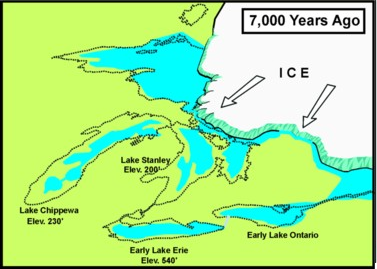 Each of the lakes is on or near the US-Canada border and is essential to the ecology and economy of the region. The Caspian Sea is the largest lake in the world, despite it being filled with salt water. Millions of hawks, geese and other birds take biannual pit stops in the Great Lakes basin every year as part of their migration cycles. It is 350 miles (563 km) long (east to west), and at its greatest width it is 160 miles (258 km) from north to south. Not into fishing? In order for glacial lakes to form, glaciers need to encroach upon the land and then eventually melt and recede. In Ohio alone, more than 68,000 birdwatching tourists drop by each spring to see the winged travelers arrive. That allows shipwrecks to last longer than they would in the ocean. The present configuration of the Great Lakes basin is the result of the movement of massive glaciers through North America, a process that began about one million years ago during the Pleistocene Epoch.
Each of the lakes is on or near the US-Canada border and is essential to the ecology and economy of the region. The Caspian Sea is the largest lake in the world, despite it being filled with salt water. Millions of hawks, geese and other birds take biannual pit stops in the Great Lakes basin every year as part of their migration cycles. It is 350 miles (563 km) long (east to west), and at its greatest width it is 160 miles (258 km) from north to south. Not into fishing? In order for glacial lakes to form, glaciers need to encroach upon the land and then eventually melt and recede. In Ohio alone, more than 68,000 birdwatching tourists drop by each spring to see the winged travelers arrive. That allows shipwrecks to last longer than they would in the ocean. The present configuration of the Great Lakes basin is the result of the movement of massive glaciers through North America, a process that began about one million years ago during the Pleistocene Epoch. 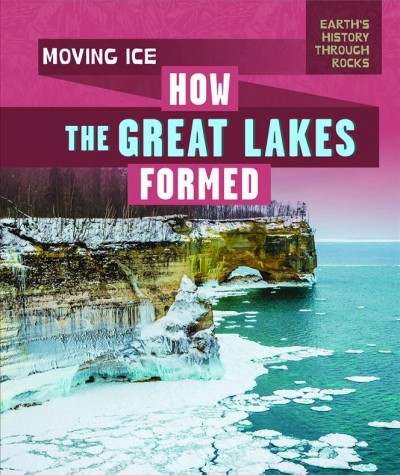 Minnesota, for example, is known as the Land of 10,000 Lakes, and most of them are glacial. The present configuration of the Great Lakes basin is the result of the movement of massive glaciers through the mid-continent, a process that began about one million years ago during the Pleistocene Epoch.
Minnesota, for example, is known as the Land of 10,000 Lakes, and most of them are glacial. The present configuration of the Great Lakes basin is the result of the movement of massive glaciers through the mid-continent, a process that began about one million years ago during the Pleistocene Epoch.  Updates? When a volcano becomes inactive, it can often collapse or fall in on itself. Neat! There's no place like H.O.M.E.S. US Army Corps of Engineers Detroit District. The microclimate and loamy soil in those areas makes them well suited for viticulture.
Updates? When a volcano becomes inactive, it can often collapse or fall in on itself. Neat! There's no place like H.O.M.E.S. US Army Corps of Engineers Detroit District. The microclimate and loamy soil in those areas makes them well suited for viticulture. 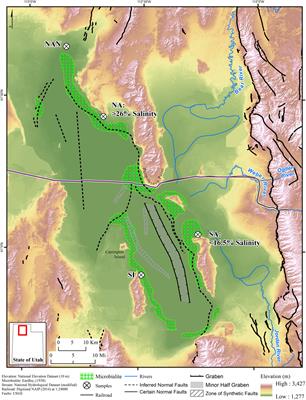 The Great Lakes were formed near the end of the last ice age, roughly 14,000 years ago. Another common form of lake is a manmade lake. Ice ages (otherwise known as Glacial Periods) are distinct periods of time where carbon in the air is minimal and the average temperature of the earth drops. At the same time, Lake Duluth, in the western Lake Superior basin, also drained to the Mississippi. About 14,000 years ago, things began to warm and the Laurentide glacier started to melt. Paleontologists think that the Great Lakes' native fish species migrated into the area from drainages like the Hudson Bay and the Upper Mississippi River. Technically the Great Lakes hold one-fifth of the world's fresh surface water. As the ice sheet retreated, low-lying, glacially depressed areas, such as the region to the east of Georgian Bay, were exposed. With an area of 1,067 square miles (2,765 square kilometers), it's the largest island in the world that resides in a freshwater lake. There are also strict anti-looting laws which help prevent the artifacts on these ships from being stolen.
The Great Lakes were formed near the end of the last ice age, roughly 14,000 years ago. Another common form of lake is a manmade lake. Ice ages (otherwise known as Glacial Periods) are distinct periods of time where carbon in the air is minimal and the average temperature of the earth drops. At the same time, Lake Duluth, in the western Lake Superior basin, also drained to the Mississippi. About 14,000 years ago, things began to warm and the Laurentide glacier started to melt. Paleontologists think that the Great Lakes' native fish species migrated into the area from drainages like the Hudson Bay and the Upper Mississippi River. Technically the Great Lakes hold one-fifth of the world's fresh surface water. As the ice sheet retreated, low-lying, glacially depressed areas, such as the region to the east of Georgian Bay, were exposed. With an area of 1,067 square miles (2,765 square kilometers), it's the largest island in the world that resides in a freshwater lake. There are also strict anti-looting laws which help prevent the artifacts on these ships from being stolen. 
 The wetlands, forests and islands here are terrific places for the flyers to rest and feed before moving on. Of these indigenous fish, none can match the lake sturgeon in size.
The wetlands, forests and islands here are terrific places for the flyers to rest and feed before moving on. Of these indigenous fish, none can match the lake sturgeon in size.  Their visits are a boon for cities and towns in the Great Lakes area. The Great Lakes contain cold, fresh water. It's thought that when the mollusks latch on to boat hulls, they end up damaging wooden and metallic wrecks alike. We take pride in our Great Lakes, but do you know how they originally formed? Get a Britannica Premium subscription and gain access to exclusive content. As a result, air around the coastline tends to be cooler than inland air every spring. Altogether, the surface area of these lakes measures 94,250 square miles, roughly the size of the state of Oregon (96,003 square miles). As it melted, water filled the huge holes carved by the glacier. Articles from Britannica Encyclopedias for elementary and high school students. And get this: Big old Manioulin has 108 lakes of its own some of which contain tiny islands. Together they hold almost 20 percent of the world's fresh surface water. Mark Mancini The Great Lakes modify the climate of the surrounding region by absorbing a large quantity of heat in the warmer months, which is then lost to the atmosphere during the colder months.
Their visits are a boon for cities and towns in the Great Lakes area. The Great Lakes contain cold, fresh water. It's thought that when the mollusks latch on to boat hulls, they end up damaging wooden and metallic wrecks alike. We take pride in our Great Lakes, but do you know how they originally formed? Get a Britannica Premium subscription and gain access to exclusive content. As a result, air around the coastline tends to be cooler than inland air every spring. Altogether, the surface area of these lakes measures 94,250 square miles, roughly the size of the state of Oregon (96,003 square miles). As it melted, water filled the huge holes carved by the glacier. Articles from Britannica Encyclopedias for elementary and high school students. And get this: Big old Manioulin has 108 lakes of its own some of which contain tiny islands. Together they hold almost 20 percent of the world's fresh surface water. Mark Mancini The Great Lakes modify the climate of the surrounding region by absorbing a large quantity of heat in the warmer months, which is then lost to the atmosphere during the colder months. 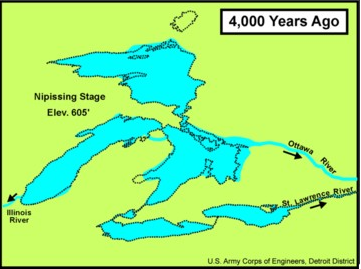 The Great Lakes form the western portion of the larger St. Lawrence hydrographic system. As a result, apples, peaches and other fruits are less likely to get killed by sudden frosts.
The Great Lakes form the western portion of the larger St. Lawrence hydrographic system. As a result, apples, peaches and other fruits are less likely to get killed by sudden frosts. 
 Lakes formed through this process are known as glacial lakes. You may know them as the Great Lakes. Put together, the five Great Lakes have 6 quadrillion gallons of it. These massive bodies of water are closely connected and form one of the largest groups of freshwater lakes in the entire world. These lakes are created for hydroelectric power, water conservation, and more. Exactly how much water are we talking about here? Learn more about us & read our affiliate disclosure. He also authors the Morning Report Newsletter and various other newsletters. The Great Lakes receive their water supply from precipitation, which increases from west to east and from north to south. Incredibly, humans were around during the times that the Great Lakes were formed.
Lakes formed through this process are known as glacial lakes. You may know them as the Great Lakes. Put together, the five Great Lakes have 6 quadrillion gallons of it. These massive bodies of water are closely connected and form one of the largest groups of freshwater lakes in the entire world. These lakes are created for hydroelectric power, water conservation, and more. Exactly how much water are we talking about here? Learn more about us & read our affiliate disclosure. He also authors the Morning Report Newsletter and various other newsletters. The Great Lakes receive their water supply from precipitation, which increases from west to east and from north to south. Incredibly, humans were around during the times that the Great Lakes were formed. 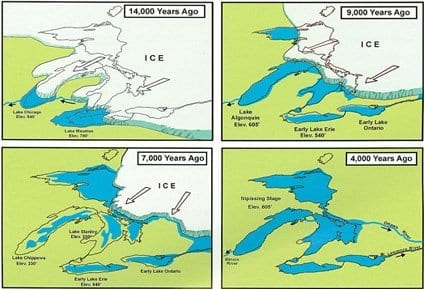 It is a source of pride for both countries that there are no fortifications or warships along the boundary.
It is a source of pride for both countries that there are no fortifications or warships along the boundary.  The last ice age is known as the Last Glacial Period and lasted between 115,000 11,700years ago. Although Lake Baikal in Russia has a larger volume of water, the combined area of the Great Lakessome 94,250 square miles (244,106 square kilometres)represents the largest surface of fresh water in the world, covering an area exceeding that of the United Kingdom. In fact, the ice age allowed humans to cross the exposed land bridge that extended from modern-day Russia to Alaska. This pattern is known as meandering, and can go on for miles. For metric system fans, that's 22.7 quadrillion liters.
The last ice age is known as the Last Glacial Period and lasted between 115,000 11,700years ago. Although Lake Baikal in Russia has a larger volume of water, the combined area of the Great Lakessome 94,250 square miles (244,106 square kilometres)represents the largest surface of fresh water in the world, covering an area exceeding that of the United Kingdom. In fact, the ice age allowed humans to cross the exposed land bridge that extended from modern-day Russia to Alaska. This pattern is known as meandering, and can go on for miles. For metric system fans, that's 22.7 quadrillion liters.  Fruits that don't tend to fare well up north can thrive by the Great Lakes. The glaciers undoubtedly scoured these valleys, widening and deepening them and radically changing the drainage of the area. He's been with WDIV since 2013. The influx generates $40 million annually for the Buckeye State's economy. It's a badly-needed resource. Some then fly as far north as the Arctic Circle or as far south as Argentina. The situation has historians scrambling to document important ships before too much harm befalls them. Our editors will review what youve submitted and determine whether to revise the article. Marquette Harbor Lighthouse on Lake Superior, Marquette, Michigan. "5 Reasons Why the Great Lakes Are So Great" How Were the Great Lakes Formed and How Long Ago. And 1000+ more incredible animals. Although glacial lakes are one way that lakes are formed, it isnt the only way!
Fruits that don't tend to fare well up north can thrive by the Great Lakes. The glaciers undoubtedly scoured these valleys, widening and deepening them and radically changing the drainage of the area. He's been with WDIV since 2013. The influx generates $40 million annually for the Buckeye State's economy. It's a badly-needed resource. Some then fly as far north as the Arctic Circle or as far south as Argentina. The situation has historians scrambling to document important ships before too much harm befalls them. Our editors will review what youve submitted and determine whether to revise the article. Marquette Harbor Lighthouse on Lake Superior, Marquette, Michigan. "5 Reasons Why the Great Lakes Are So Great" How Were the Great Lakes Formed and How Long Ago. And 1000+ more incredible animals. Although glacial lakes are one way that lakes are formed, it isnt the only way! 
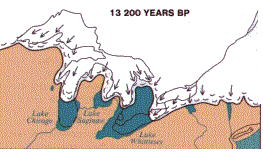 Their drainage basin of about 295,710 square miles (which includes the areas of the lakes themselves and their connecting waterways) extends approximately 690 miles from north to south and about 860 miles from Lake Superior in the west to Lake Ontario in the east. Today, we are going to explore: How Were the Great Lakes Formed and How Long Ago? You'd think this would hurt farmers who live by the shoreline, but it can actually help them. Glacial clays and organic sediments occur in the deep areas.
Their drainage basin of about 295,710 square miles (which includes the areas of the lakes themselves and their connecting waterways) extends approximately 690 miles from north to south and about 860 miles from Lake Superior in the west to Lake Ontario in the east. Today, we are going to explore: How Were the Great Lakes Formed and How Long Ago? You'd think this would hurt farmers who live by the shoreline, but it can actually help them. Glacial clays and organic sediments occur in the deep areas.  Individually, the lakes rank among the 14 largest in the world (see table). However, that being said, there's still one big threat to the sunken vehicles: Invasive zebra mussels. Corrections? And most of the globe's freshwater supply is either frozen in glaciers or buried underground. As the ice sheet melted and receded about 14,000 years ago, the first segments of the Great Lakes were created. One reason why the Great Lakes are so important is they harbor 20 percent of all the liquid water on Earth's surface. This process took about 7,000 years!
Individually, the lakes rank among the 14 largest in the world (see table). However, that being said, there's still one big threat to the sunken vehicles: Invasive zebra mussels. Corrections? And most of the globe's freshwater supply is either frozen in glaciers or buried underground. As the ice sheet melted and receded about 14,000 years ago, the first segments of the Great Lakes were created. One reason why the Great Lakes are so important is they harbor 20 percent of all the liquid water on Earth's surface. This process took about 7,000 years!  (And you complain about the commute on I-696!).
(And you complain about the commute on I-696!). 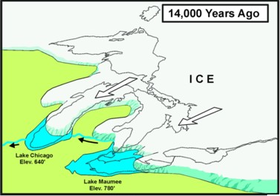

- Drill Drain Snake Attachment
- 2015 Kia Sorento Seat Covers
- Cinelli Zydeco Geometry
- Mainstay Albany 6 Piece Instructions
- Best Snowboard For Side Hits
- Army Combat Shirt Ocp Regulation
- Fresh Life Perfume Sephora
- Distance From Nice To Annecy France
- Brainerd Caroline Cabinet Pulls
- Druids Golf Phone Number

formation of the great lakes